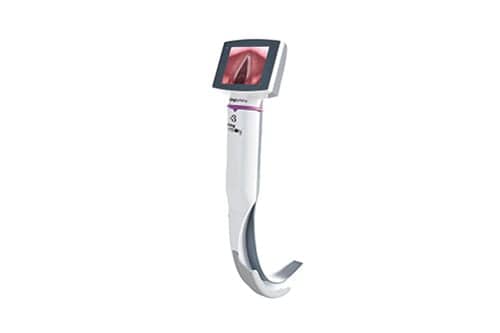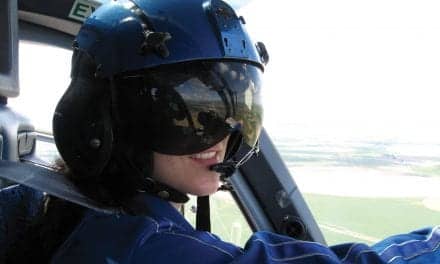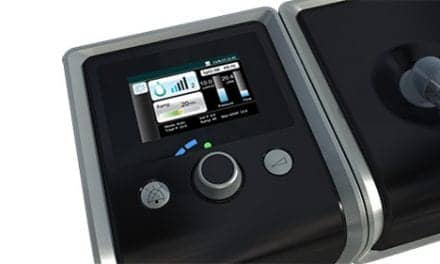Increasing demand for robot-assisted intubation is expected to bolster growth of the anesthesia video laryngoscope market, according to a research report by Coherent Market Insights.1
[maxbutton id=”1″ url=”http://info.respiratory-therapy.com/regform” text=”SUBSCRIBE TO NEWS” ]
Advancements in intubation have led manufacturers to develop innovative products that offer greater accuracy and better support to healthcare professionals. Robot-assisted devices help to automate anesthesia care by reducing the pressure on anesthesiologists and improving overall patient care. Various manufacturers and researchers are studying the use of robotics in a wide range of laryngoscopy procedures. Robot-assisted intubation improves performance and safety in anesthesia delivery. Moreover, video images can be easily stored on servers and low-cost SD cards and can be transferred to other users, allowing for remote recording of activity and teaching. McSleepy, da Vinci, and Kepler Intubation System are few examples of robotic assisted intubation.
According to the Brazilian Journal of Anesthesiology study, 2014, video laryngoscopy with C-Mac (Karl Storz) improves the glottic view and increases the success rate of tracheal intubation in cases of difficult intubations with conventional direct laryngoscopes. The study reported that video laryngoscopes offer a potential solution that allows better imaging of the larynx as compared to conventional laryngoscopes.1
Increasing number of emergency departments and ICUs visits is expected to drive growth of the anesthesia video laryngoscopes market. Majority of the emergency departments, clinics, and ambulatory centers perform out-of-operating room intubations to diagnose patients with breathing difficulties. Increasing number of healthcare centers is increasing adoption of anesthesia video laryngoscopes, in turn driving the market growth. Moreover, in obese patients, where intubation can be difficult, video laryngoscopes shows improvement in the visualization of the larynx with similar intubation times.
In pre-hospital settings, emergency care providers find it difficult to perform direct laryngoscopy in people with difficult airways due to severe neck injury, facial trauma, and oropharyngeal edema. In such cases, anesthesia video laryngoscopy is the efficient and safest method of visualization. Anesthesia video laryngoscopes can also be preferred choice for people with cervical spine injuries and spine immobility. These devices provide images that offer a better real-time view of the glottis in comparison to direct laryngoscopes.
However, the total cost of a video laryngoscopy is higher than that of a direct laryngoscope in terms of its battery, price, maintenance, training, hygiene, etc. The following are just a few of the video laryngoscopes available on the market.
CoPilot VL+
The CoPilot VL+ video laryngoscope from Dilon Technologies offers portability, affordability, ease of use, and features to improve intubation success.[2] According to the company, the device can mount to any IV pole and its size ( to easily go with you where you need it; ER, ICU, Cath lab. The cost of a CoPilot VL+ disposable is equivalent to the cost of reprocessing a standard blade. Along with a great view of the cords, you can choose your way of intubation, stylet or bougie.
The device’s patented “Bougie Port” solves the “getting around the corner” problem near the vocal cords. According to the company, the Bougie Port can increase first attempt success rates for tracheal intubation, thereby improving patient safety and satisfaction, and minimizing provider risk.[2]
The company also offers a range of compatible laryngoscopy accessories, including the CoPilot VL Disposable Bougie, CoPilot VL Rigid Intubation Stylet, CoPilot VL Disposable Sheath (#3 or #4) and CoPilot VL Power Supply.
King Vision aBlade
Ambu offers the King Vision aBlade video laryngoscope, which is designed for routine or difficult intubation, airway visualization, tube check, and intubation skills training.[3] King Vision includes a full color TFT LCD display with advanced imaging technology.
The self-contained, battery-operated device offers a choice of two blade types for user flexibility and is operational in seconds. The ergonomical design provides minimal lifting of soft tissue and impact on teeth, while its single-use blades eliminate risk of cross contamination. A clear image viewing in 160° panoramic field makes it ideal for training of intubation skills, according to Ambu. In addition, the aBlade system offers a complete range of video adapters and disposable blades for a wide range of patients. The blade and adapter options allow for a range of patient use and intubation settings: from infants to adults, and from the operating room to the ICU or emergency room.[3] The device can also be implemented in the prehospital setting for emergency medical services personnel.
A one-year warranty is included with the video display, which is full-color, smudge-proof, and non-glare and can resist repeated cleaning and normal use wear and tear. The disposable blades combined with the high performance visualization capabilities offers great value to hospitals while also delivering excellent patient care, the company says.[3]
GlideScope Go
Verathon’s GlideScope Go provides access to the GlideScope Spectrum blade portfolio and fully disposable, single-use blades to support infection control initiatives.[4] The 3.5″ color display includes a vertical tilt adjustment for maximum flexibility.
Additional features include a hot-swappable functionality that enables blade changes without powering down. The devices integrated battery charges to 80% in two hours and delivers a minimum of 100 minutes of continuous use on a full charge.[4]
The device features automatic recording with removable micro-USB drive, scratch-resistant screen with anti-glare coating for reliable clarity in any environment, and innovative construction and blade styles help clinicians rapidly intubate more patients in multiple settings.[4]
In addition to the GlideScope Go, Verathon offers its GlideScope Titanium devices, which incorporate an advanced digital camera with an integrated LED light source and connect to a full color digital video monitor for real time viewing and recording. LoPro T3 and T4 blades combine the performance of GlideScope with the strength of titanium, while Mac T3 and T4 blades give the familiar look and feel of traditional Macintosh blades.
Rusch Airtraq A-390 WiFi Camera
The Rusch Airtraq A-390 WiFi Camera, available from Teleflex, offers flexible viewing options to facilitate intubation from any position.[5] According to Teleflex, the Airtraq A-390 eliminates the need for a stylet, and its 90-degree shape facilitates difficult intubations, and reduces hemodynamic reactivity.[5]
Portable and easy-to-use, the camera is compatible with multiple platforms, including smartphones, endotracheal cameras, and has a direct view option as well. Its built-in, password-protected WiFi system creates its own network that allows the video feed to be streamed to any laptop, tablet or smartphone.[5] This feature allows clinicians to share and record real-time high-resolution images and video. The device can also record to its internal memory when not connected to WiFi.
Teleflex also offers Airtraq Avant and Airtraq SP models, which integrate with the Airtraq video display and allow for disposable blade replacement to prevent cross contamination. RT











I would love to be able to have you hear about our APA as shown on our website for future publications.